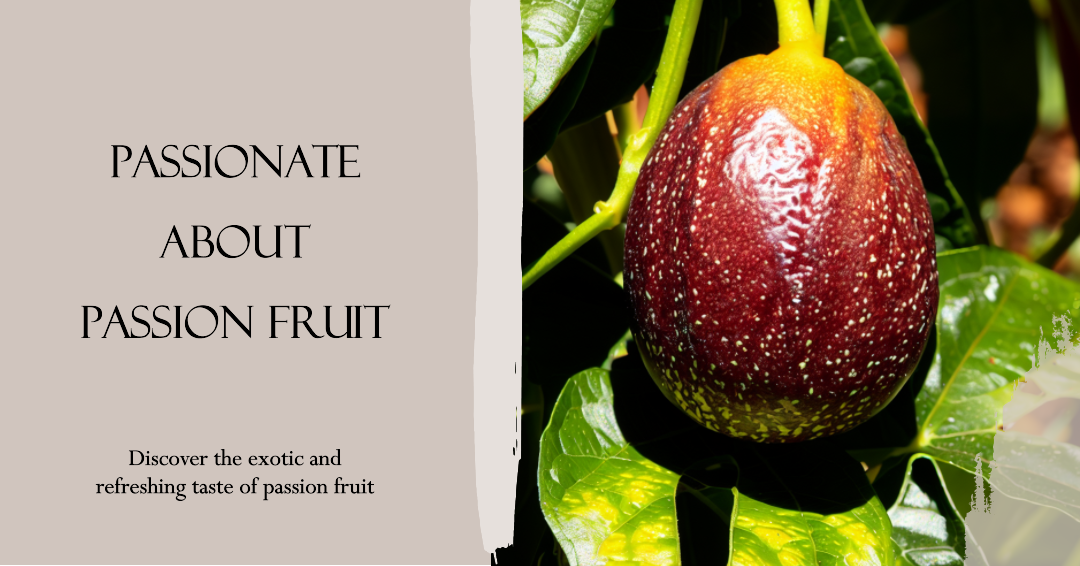Enter the enchanting world of passion fruit, where vibrant vines climb with exuberance and delicate flowers give way to luscious, aromatic fruit. From its captivating appearance to its delightful taste and versatile uses, passion fruit (Passiflora edulis) is a treasure trove of possibilities. In this OrganicMotion article, we delve into the enchanting story of passion fruit, from its description and cultivation to its nutritional value and culinary versatility.
Unveiling the Allure of Passion Fruit
Passion fruit is a woody perennial vine native to South America, renowned for its vigorous growth and intriguing appearance. This climber boasts shallow roots and distinctive tendrils that aid its ascent. The glossy green leaves with three deep lobes add visual interest to its sprawling foliage. Each node on the vine produces a striking flower that eventually gives way to the fruit.
A Symphony of Colors and Flavors
Passion fruit’s enchantment extends to its round to oval fruit, which can be either yellow or dark purple, depending on the variety. Inside the thin rind lies a treasure trove of aromatic, juicy pulp filled with numerous seeds. The flavor is a delightful combination of sweet and tangy, making it a true culinary delight.
The Many Faces of Passion Fruit
Beyond its delectable taste, passion fruit serves a range of functions in your garden and kitchen:
- Edible Fence and Shade: Planting multiple passion fruit vines in a row forms an edible fence or shade barrier, protecting against the hot afternoon sun or creating a natural screen.
- Container Gardening: Passion fruit vines can be cultivated in containers, making them a versatile choice for balconies or small spaces. Regular pruning and maintenance are essential for successful fruiting.
- Nutrient-Rich Mulch: The leaves and empty shells of passion fruit are excellent materials for organic mulch. They break down quickly, enriching the soil with valuable nutrients.
Nurturing and Harvesting
Cultivating passion fruit requires attention to detail and a touch of patience:
- Propagation: Grow passion fruit vines from seeds extracted from the fruit. Within a few weeks, seedlings will emerge, ready to be transplanted.
- Pollination: Multiple vines are needed for successful pollination. Encourage beneficial insects like bees to aid in the pollination process.
- Harvesting: Passion fruit quickly changes from green to its characteristic color (purple or yellow) when ripe. You can either pick them when they change color or gather fallen fruit from the ground.
Culinary Delights
The culinary potential of passion fruit knows no bounds:
- Fresh Consumption: Spoon the juicy pulp directly from the shell and savor the sweet-tart flavor. The slightly shriveled fruit is often the sweetest.
- Jams and Desserts: Turn passion fruit into delectable jams, jellies, and desserts. The tangy flavor adds a unique twist to your creations.
- Versatile Juice: Extract the juice to use in cocktails, smoothies, and beverages. Squeeze the juice from the seeds to enjoy the flavor without the crunch.
Beauty, Flavor, and Versatility
Passion fruit is a symbol of nature’s artistry, offering beauty, flavor, and versatility to your suburban garden. As you nurture this vine, you’ll be rewarded with a bountiful harvest and the joy of exploring its culinary possibilities. Whether you’re indulging in its exotic taste or using it as a natural screen, passion fruit is an invitation to embrace the wonders of nature while enhancing your organic lifestyle.
